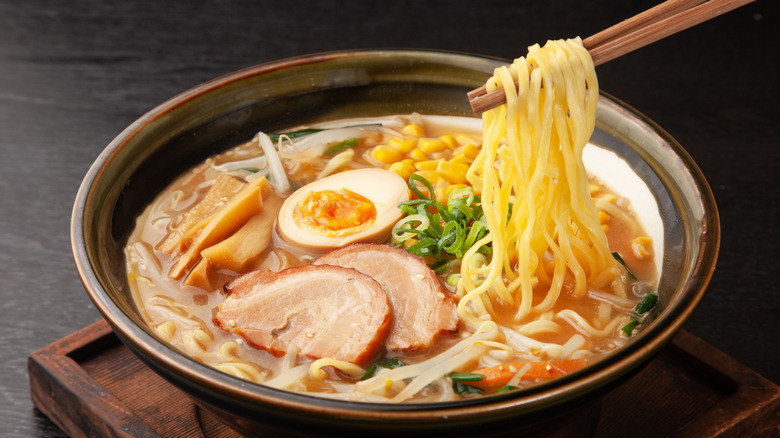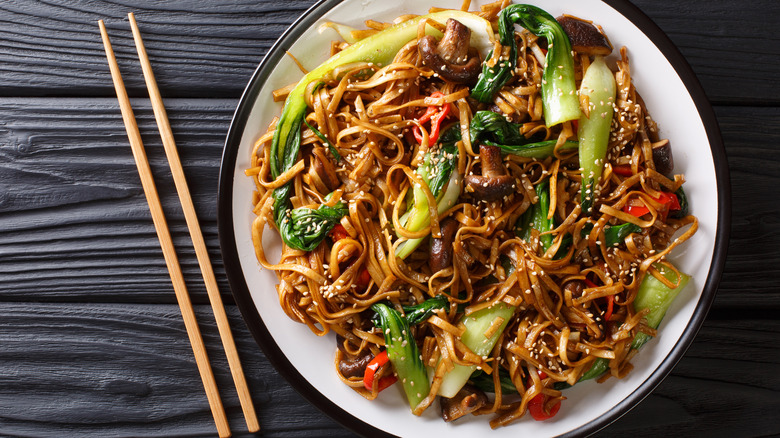Udon Vs. Ramen: What's The Difference?
There's something comforting and satisfying about twirling delicious, starchy noodles around the tines of a fork, or winding them between your chopsticks. They're tasty and eaten in a variety of ways, but it's most common to slurp your noodles out of a soup, as reported by Nona Lim. If you love noodles either in a sauce or in a broth, you may not know the difference between udon or ramen. There are some similarities, mainly some of the ingredients, since both are wheat flour based, but ramen noodles are made with egg and udon noodles don't contain egg.
Needless to say, the other similarity is that they're both noodles, but there's more to each type of noodle than meets the eye. While most people think about ramen, they may conjure up images of the packaged dried noodles that you make at home by cooking to boiling water and adding a seasoning packet. But ramen runs much deeper than the store-bought instant version that's become ubiquitous in America.
Popular in Japan
Ramen is a noodle soup that has become one of the country's most popular dishes over the past few decades, as reported by Japan-guide.com. The Japanese version of ramen soup isn't similar to the instant noodle type that is sold in grocery stores. The Japanese type comes in several versions, from a soy sauce-based type to versions made with miso or pork bone broth.
Created from just a few ingredients, udon noodles, on the other hand, are made using wheat flour, salt, and water, according to Masterclass. It's widely believed that udon noodles originated in China and were introduced to Japan around 618 to 907 CE, during the Tang dynasty. Although today's udon are long, originally they may have more closely resembled a dumpling than a noodle. Like ramen, udon is served in a number of ways, such as in a curry roux, a miso soup with vegetables, and stir-fried with a sauce. Both are tasty, and filling, and can be served in a number of ways, but if you're vegan or don't consume eggs, be sure to stick with udon.

